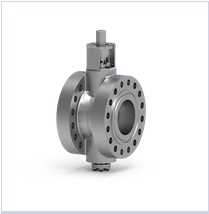Opportunity or Annoyance?
Price differentials between conventional and opportunity crudes compel refiners to process increasing percentages of lower valued opportunity crude. However, as many refiners have learned the hard way, opportunity crudes are tied to unique processing challenges. Furthermore, existing crude unit configurations may limit high profit opportunity crude to a disappointingly small proportion of the total unit blend.
Processing a changing slate of opportunity crudes of varying compositions requires a CDU/VDU design that is flexible, reliable, and commercially proven. A good design must control chronic problems associated with many of these crudes including corrosion, exchanger fouling, tray plugging, vacuum heater and wash bed coking, and unreliable product quality prediction. CDU/ VDU designs for challenging crudes should be based on proven best-practices rather than simply on a low- CAPEX strategy. For example, a poorly designed heat exchanger may operate well initially, but high fouling will quickly lower efficiency and eventually limit throughput. Up front investment in engineering experience and know-how pays dividends when units meet capacity and run-length targets.
Over the course of 20 years, Process Consulting Services has completed more than 130 revamp and grassroots designs supported by over 75 detailed test runs. An extensive collection of test run equipment performance data and feed/product analyses enables confident prediction of real-world opportunity crude performance. PCS has enabled refiners worldwide to extend crude unit run lengths from months to years while improving yields and operability.
-
Oil sands crude — profits and problems?
Canadian bitumen production currently runs about 1 MMbpd, with some being sold as Synbit and Dilbit. Over the next 10-12 years output is expected to increase to 3.5 MMbpd and more refiners will begin investing to process it and come to depend on the Synbit and Dilbit for a significant part of their supply. ...
-
Heavy crudes are here to stay. As longs as oil prices remain high, Canadian, Venezuelan, Deep Water Gulf of Mexico, Mexican and other low API gravity crude oils will play an ever more important role in supplying world refineries. And prices promise to remain high because gainsayers notwithstanding, Hubbert ...
-
Designing deepcut vacuum units that really work
Every barrel of vacuum gas oil (VGO) you can save from being reduced to coke in the delayed coker unit is a barrel more that can go to the FCCU. That’s a good reason to raise HVGO cutpoint. But how to do it? Some people think the job can be done just by running computer models in the engineering ...
-
Some do’s and dont's of project execution
A widely studied in-depth survey identified 18 key factors that influence selection of engineering contractors. Project management (PM) capability was number 1. Conceptual engineering (CE) capability was number 17. Now, there can be no argument about number 1. But ranking CE next to last raises some ...
-
A time for grass roots thinking ?
Within the past year or two spiking crude prices and surging refinery margins have led to overheated talk about increasing refinery capacity worldwide. Plans for construction of as many 60 grass roots refineries have been discussed. But stretched out lead times for major equipment and inflated prices, ...
-
A single integrated vacuum system
Failure to design the vacuum unit as an integrated system will invariably result in unsatisfactory yield and poor product quality (high vanadium, nickel, microcarbon, or asphaltenes), and ultimately, an unscheduled shutdown. To avoid these revamp problems the charge pump, fired heater, transfer line, ...
-
Back in the late 1970’s and early 1980’s when fuel gas prices were high, energy utilization assumed major importance. A new method of calculating heat exchanger networks was developed. It was called Pinch Technology. Today pinch has been rediscovered by engineers who have access to fast computer ...
-
A group of interesting articles* deals with opportunity crudes, a mixed breed that includes very heavy, sour and high total acid number types as well as those with unexceptional naphthenic acid content but which do have significant concentrations of aliphatic acids or possess the ability to generate ...
-
Processing heavy Canadian crude
Reducing crude oil cost is the major incentive driving crude and vacuum unit projects to handle heavy Canadian crudes. But such crudes–Albian Heavy, Christina Lake, MacKay River and others derived from oil sands–today present refiners with a unique set of problems not just because of extra-low ...
-
Why do many crude/vacuum units perform poorly?
In many cases it’s because the original design was based more on virtual than actual reality. There is no question: computer simulations have a key role to play but it’s equally true that process design needs to be based on what works in the field and not on the ideals of the process simulator. ...

















